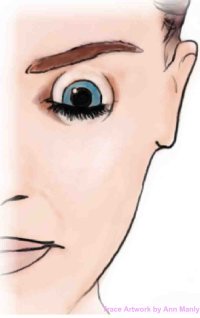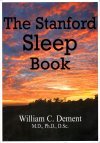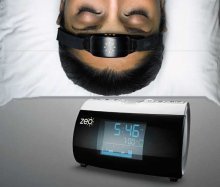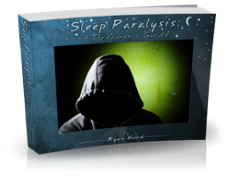
| Connect & Subscribe |
Inception's Dream Time & An Awesome (Conflicting) Lucid Dreaming Experiment
Written by Kevin Morton, January 25, 2011
As we head into the dreams segment of this year's Sleep and Dreams class, we're fortunate enough to once again welcome Dr. Stephen LaBerge, the prolific and always-entertaining lucid dream researcher and founder of the Lucidity Institute who perennially gives among the most highly anticipated lectures each year.
Dr. LaBerge's lectures last year were attended by actor Joseph Gordon-Levitt, who played Arthur in the recent smash-hit film Inception. Besides soaking up the lecture, Gordon-Levitt also conducted an interview with each Dr. LaBerge and Dr. Dement for a documentary on lucid dreaming that's packaged with the Inception DVD (A quick look on Amazon and it appears to be on Disc 2 of the Two-Disc Edition).
He also took a moment to holler the class mantra, Drowsiness is red alert, which you can see in the vid below:
(That's Dr. LaBerge in the background, speaking with Dr. Dement amidst interviews.)
Inception is just a bloody brilliant movie on quite a number of levels. Its plot is extraordinarily layered and its explorations so deep that it's as much exercise to the mind as it is pleasure to the eye. After watching Memento recently and now this, Christopher Nolan has quickly ascended the ranks on my list of most respected directors.
Many people have really blasted elements of the plot since the film's release, sometimes well-founded and sometimes not (e.g. for the latter see this totally off-the-mark article from Benjamin Radford of Discovery News--also make sure to go through a few of the comments for more of what I mean by "off the mark") (update: the comments look to have since been removed, after the site the article is published on switched). Pushing films in a critical way is certainly a healthy practice, but to a certain extent. And I think that line may be drawn when the nitpicky-ness gets to a point where it compromises the intellectual and fantastical beauty that can be taken from the film, and some critiques of Inception seem to be overlooking that a bit. When it comes down to it I think the film is a beautiful metaphor for important questions of reality inspired by a fascinating phenomenon and artform that not everyone knows about--lucid dreaming.
(If you don't yet know much about lucid dreaming you can get an intro here. This post is mostly about an experiment involving lucid dreaming, so won't give you the basics.)
With those considerations in mind, I'm going to take the rest of this post to identify one not-so-obvious creative liberty that Nolan did take in his story, one that is in fact a crucial linchpin in which the plot operates.
That liberty rests in the depiction of dream time, which in Inception operates at a different rate than time in the waking world, progressing exponentially slower at each additional "dream level." However, the conclusions drawn from a study Dr. LaBerge conducted in 1985 involving lucid dreaming offer that this isn't quite right; but in fact, dream time elapses at exactly the same rate as time in the waking world.
Sidenote: Pointing this out is by no means a criticism of the choice to use exponentially slower dream time in the film--the plot was itself exponentially more rich because of it--but rather more to just highlight a really awesome experiment with its own high dose of creativity, which you'll see below.
So, how did Dr. LaBerge attempt to answer the question of how dream time measures up with time in the waking world? It went down like this:
To accomplish the task he called on the assistance of some highly skilled lucid dreamers. The lucid dreamers were first asked to estimate 10 seconds while awake. In general, we tend to underestimate this count, reaching 10 a little faster than we should (even using the good ol' "Mississippis" or "Alligators" technique). The lucid dreamers ended up at something like an average of 8.7 actual seconds in their estimates.
 Dr. LaBerge used eye movements during sleep to show how dream time corresponds with time in the waking world.
Dr. LaBerge used eye movements during sleep to show how dream time corresponds with time in the waking world.
Once he had these numbers, Dr. LaBerge and the dreamers called on some insight given by the scanning hypothesis--which states that during Rapid Eye Movement sleep our physical eyes move in coordination with our line of sight in the dream world. With the scanning hypothesis in mind they devised a series of signals that they would use to communicate with each other while the dreamers were in the midst of their dream. For instance, when the dreamer first became lucid he would move his line of sight something like left, right, and left. This signal would show up on Dr. LaBerge's EOG recordings to be examined afterwards.
Think about this! Consciously communicating with the waking world while dreaming! Nothing short of incredible, and really a jumping off point for other potential dream experiments (anyone want to develop a dream-world version of the Morse code??).
Once the dreamer was lucid, he would eventually remember the task at hand--to count to 10, estimating 10 seconds in the dream world as he did earlier when he or she was awake. The dreamer gave another eye signal--say, left, right, left, right--to communicate that he was starting to count, and then one final eye signal to communicate that he had reached 10--left, right, left, right.
More Articles On Lucid Dreaming
What Is Lucid Dreaming? Foundation Article
Lucid Dreaming and Athletics: The Dreamer's Advantage
Master Of The Dream World: How The Lucid Dreamer Turns Fantasy Into Reality
Sure enough, when Dr. LaBerge examined the EOG recordings the first eye movement signaling the start of counting and the second eye movement signaling the end were--you guessed it--about 8.7 seconds apart, the same as the waking estimate. It appears that time in the dream world moves at the same speed as time in the waking world.
Intuitively, this result actually makes the most sense I think. Why should the time itself operate any differently in the dreaming mind? Sure it often seems to us subjectively to operate differently, but this is likely due more to jumps in the story-line of our dreams and then our mind's tendency to fill some of those gaps with logical or expected events when we recall the dream, thus extending the perceived length of the dream.
What do you think? A pretty compelling experiment, huh?
And join the conversation with your own comments here:
blog comments powered by DisqusGo from Inception Dream Time to the What is Lucid Dreaming?
Go from Inception Dream Time to the Sleep Essentials Mini-Guide
About This Site
Welcome! This site is continuously being created by students of Dr. William C. Dement's Sleep And Dreams course at Stanford University.
We made this site as a call to action for people all over the world to live healthier, happier, safer, and more productive lives by learning about their own sleep. We have faith that reading the information provided on this site will motivate you to be smart about your sleep deprivation and strategic about your alertness in order to live life to your fullest, most energetic potential.
In fact, we challenge you to do so! What do you say, are you up for the challenge?
Interviews With Sleep Specialists: Insights Into the Worlds of Sleep Medicine & Sleep Business
America's Most Dangerous Disorder: What Is Sleep Apnea Doing To Your Sleep?
Sleep Debt: How Much More Will You Achieve When You Reduce Yours?
The Stages Of Sleep: The Journey Through The Night
Delayed Sleep Phase: You Want To Sleep But You're Not Tired Yet
Paralyzed at Night: Is Sleep Paralysis Normal?
Sleep In Words: Smart, Strange, and Funny Quotes About Sleep
Sleep Disorders In Children: What's Keeping Your Child From A Full Night's Rest?
Attacks of Pavor Nocturnus (a.k.a. Sleep Terrors, Night Terrors, or Incubus Attacks)
The Stanford Sleep Book
Dr. Dement's pioneering textbook has been the core text for Sleep and Dreams since 1980, but it has just recently been made available to the wider public for the first time.
In it you'll find a more detailed account of the most important things you need to know about sleep, alertness, dreams, and sleep disorders. Studies, statistics, plus plenty of Dr. Dement's classic anecdotes painting the history of sleep medicine.
Preface | Intro | Contents | Get A Copy
More Sleep Resources
The Zeo
A revolution in personal sleep tracking, the Zeo is a wireless headband that transmits your brainwaves in realtime to a dock (pictured here) or your smartphone. The result? You can wake up and see exactly what stages of sleep you were in during the night! Unprecedented personalized sleep knowledge.
Sleep Paralysis: A Dreamer's Guide
Ever woken up paralyzed? A surprising number of us have, believe it or not. But few know the actual causes of this phenomenon, and fewer still how to exert control over it. Dream researcher and sleep paralysis expert Ryan Hurd shares breakthrough insights into how to do just that.
Important Disclaimer
Please Note:
The information found on this page and throughout this site is intended for general information purposes only. While it may prove useful and empowering, it is NOT intended as a substitute for the expertise and judgments of healthcare practitioners.
For more info, see our
Terms of Use.









